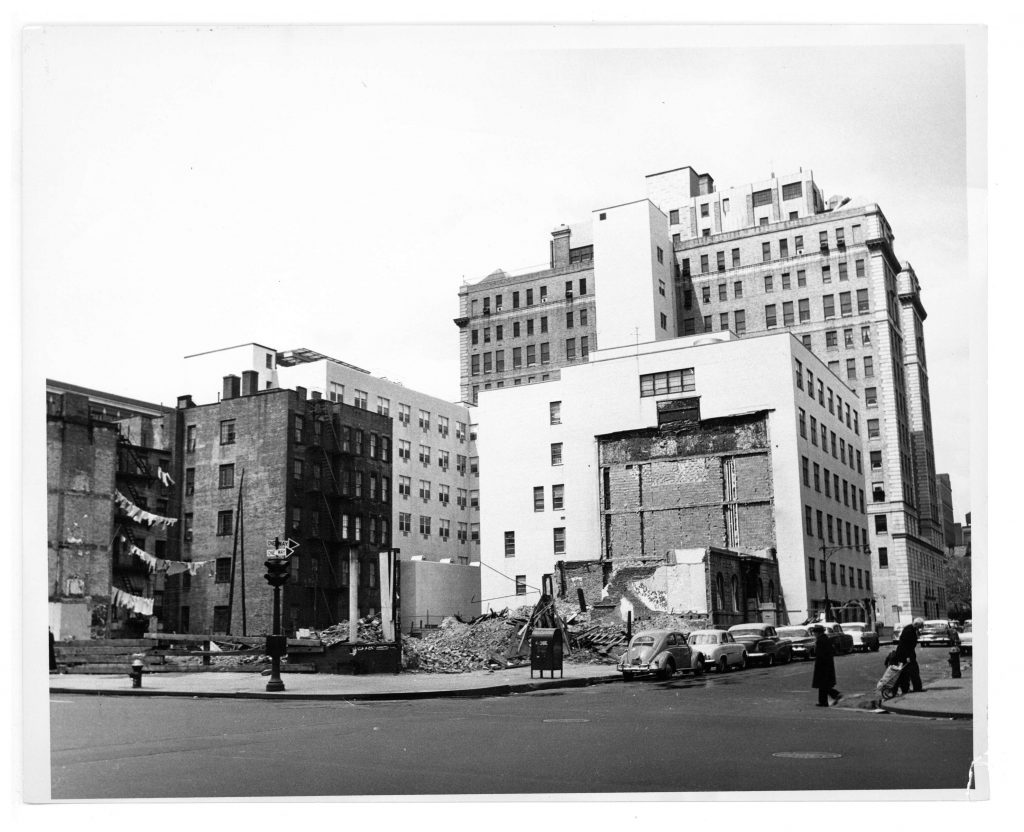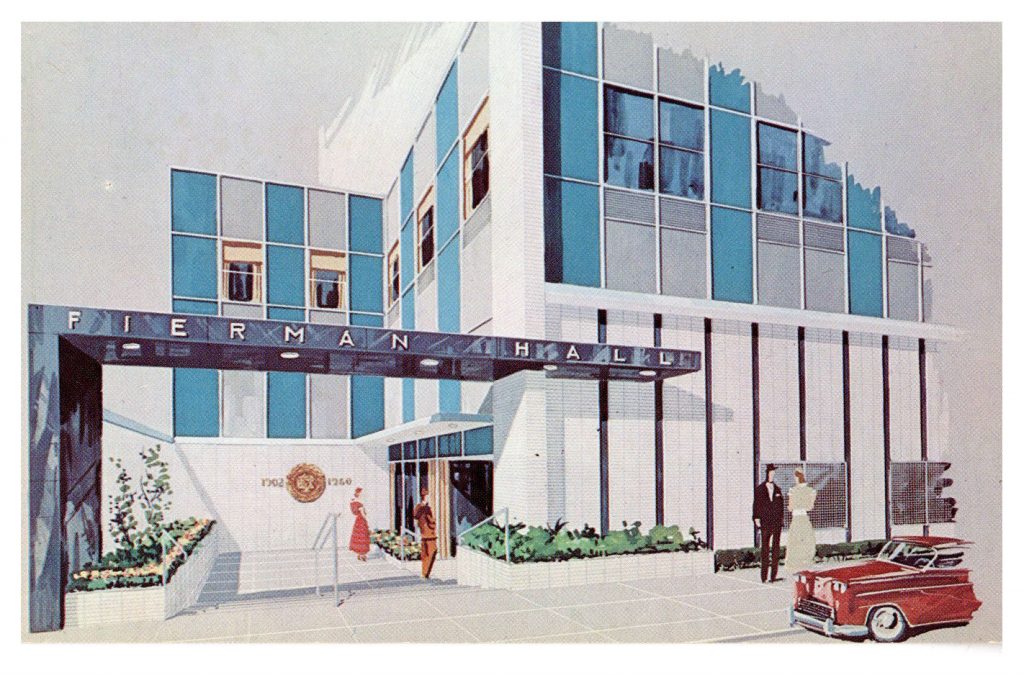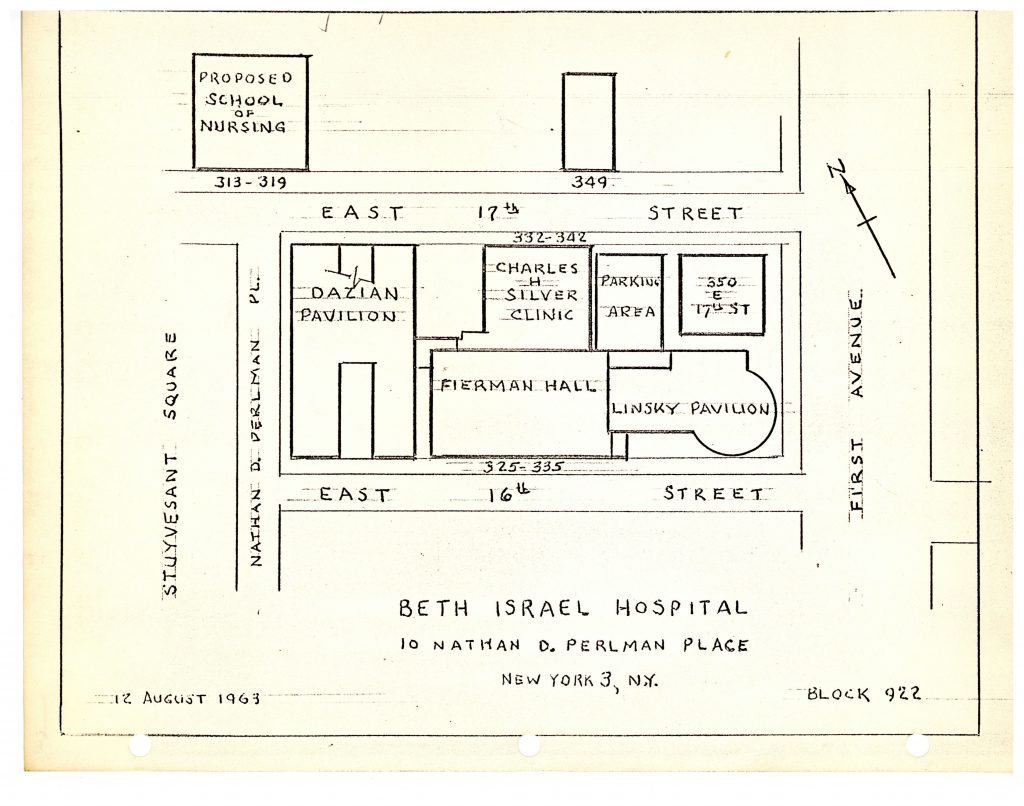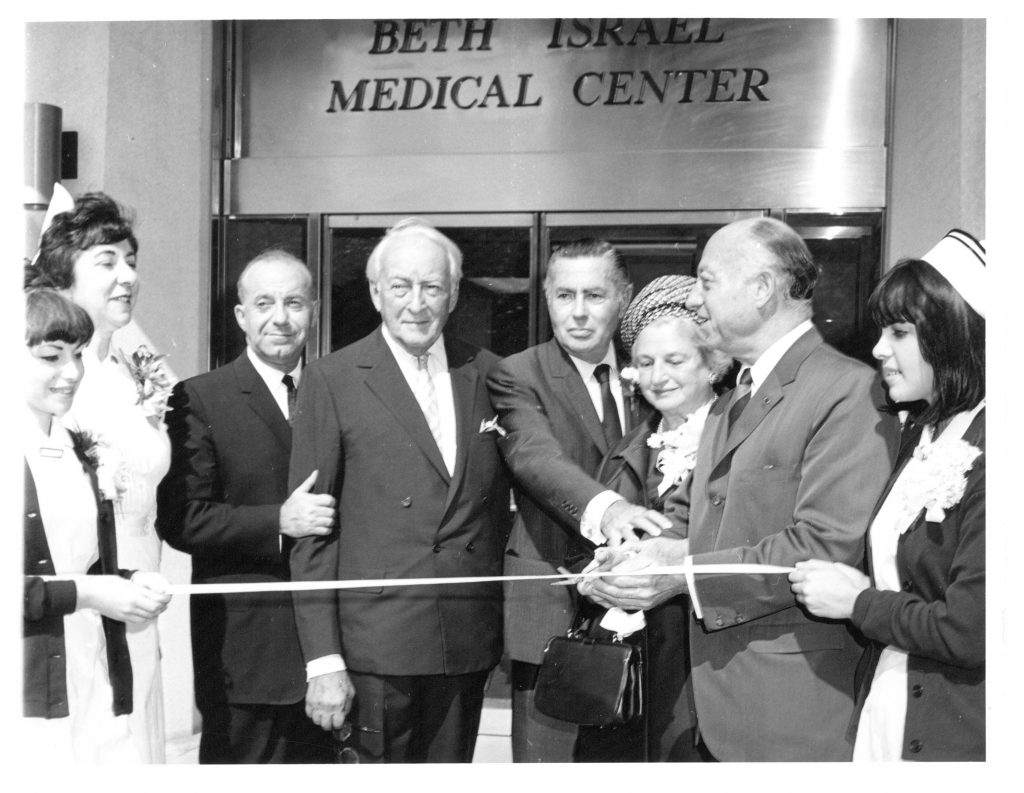An interactive map of Beth Israel historical locations is available here. See the Building Beth Israel series for more information about the history of MSBI.
The 1950s ushered in an era of rapid construction and growth for Beth Israel Hospital that would last for nearly two decades. The footprint of the Hospital during this time rapidly expanded and a number of new buildings were erected to accommodate the hospital’s growing services.
This began in 1952, when the cornerstone was laid for the Charles H. Silver Clinic at Beth Israel Hospital. The building, which was created as an outpatient clinic, would open the following year. According to the Board of Trustees minutes, it was named for Charles H. Silver because “[h]is labors, his vision, and the inspiration he has given to his colleagues have been a major contribution to the development of this great institution so that it holds a ranking position as a haven of healing, a sanctuary of science, a temple of the art of medicine.” (The Archives have additional images of Silver online here.)
On March 26, 1954, Nathan D. Perlman Place was dedicated as a tribute to the memory of the former Beth Israel Hospital Vice President, who had also served as a member of Congress. (The street was formerly named Livingston Place.)
The cornerstone was laid for a residence for Beth Israel School of Nursing students on East 16th Street on September 9, 1958. (At this time, the School of Nursing was located in the Dazian Pavilion, and the location of the new building was previously a parking lot.) At its opening, it was called Fierman Hall. Attendees of the ceremony included Senator Jacob Javits and Governor Averill Harriman, the latter of whom used it as an opportunity to criticize Senator Javits for the lack of funding by the federal government for college student housing. Mayor Robert Wagner, then-gubernatorial candidate Nelson Rockefeller, and Gustave Levy (in his capacity as the President of the Jewish Federation of Philanthropies) were also in attendance. When the building opened on September 25, 1960, there was space for 154 student nurses.
Fierman Hall’s location on East 16th Street was short-lived. Due to swelling class sizes, the space was no longer adequate for the growing School of Nursing. In 1965 alone, the incoming class size almost doubled to a hundred new students, up from sixty, and the School was recruiting six new faculty members. A new student residence, also named Fierman Hall, was dedicated at 317 East 17th Street on September 18, 1966. Senator Javits once again attended the ceremony. The new Fierman Hall on East 17th Street housed between 260 and 300 nurses (sources conflict on this number), as well as classrooms and lecture halls. Together, this allowed for an increase in class size. The first Fierman Hall on East 16th Street was renamed the Karpas Pavilion and it was repurposed for patient care.
The expansion of Beth Israel Hospital did not end there. By the end of the 1960s, the campus would grow to include the Linsky Pavilion, the Bernstein Pavilion, Baird Hall, and Gilman Hall. The history of these buildings will be featured in an upcoming post.
Sources:
- “$3.5 Million Home is Dedicated for Beth Israel Student Nurses,” New York Times, 9/18/1966, p. 45, accessed 07/20/2022
- Beth Israel Hospital, Board of Trustees, Annual Report, 1954
- Beth Israel Hospital, Board of Trustees minutes, 05/25/1952
- Beth Israel Hospital, Board of Trustees minutes, Nursing Education Committee, 12/01/1965
- “Harriman Trades Gibes With Javits: Exchange at Hospital Event Stresses Need for Funds for College Housing,” New York Times, 9/29/1958, p. 19, accessed 07/20/2022
- “High-Rise Apartments Begin With A Splash,” New York Times, 11/12/1967, p. 382, accessed 07/20/2022
Authored by Stefana Breitwieser with research credit to Nicholas Webb







